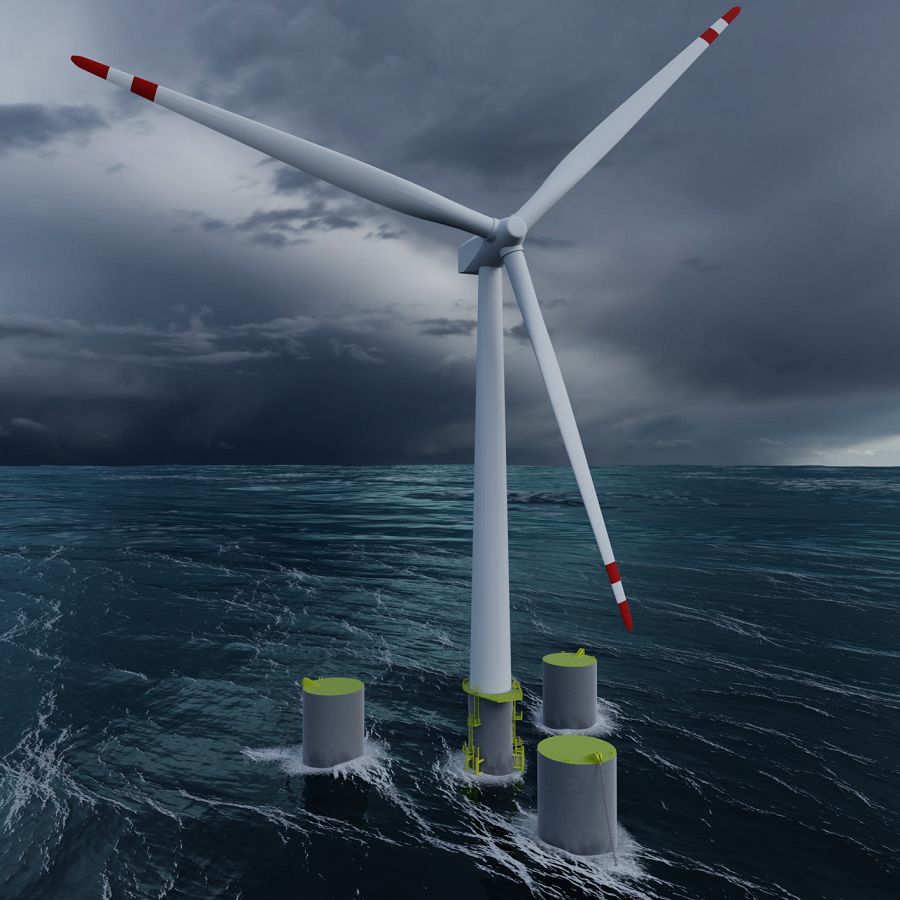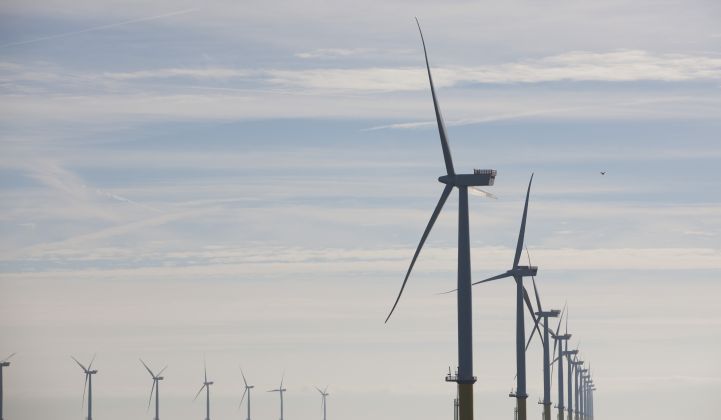Spanish utility giant Iberdrola has revealed a multi-pronged floating offshore wind strategy, announcing two pilot projects and hinting at grander ambitions for the future.
Iberdrola, which controls U.S. utility Avangrid and ranks among the world's largest wind generators, revealed Monday that it plans to have its first floating turbine in the water in 2022 with a second demonstration to follow soon after. The company said it's targeting commercial floating projects in the "near future" and is actively looking for opportunities in the U.S. and in Scotland over the longer term.
Scotland has hosted several early-mover floating wind projects already, and the deep waters off the coast of California make it fertile ground for the future.
Iberdrola also said it's assessing the opportunity to install floating turbines alongside bottom-fixed projects from its 10-gigawatt offshore development pipeline.
“Now is the right time to move from research and development to putting turbines in the water and increasing our knowledge,” Jonathan Cole, Iberdrola’s global managing director for offshore wind, said in a statement.
“Iberdrola aims to be a leading player in the floating offshore wind sector, and the demonstration projects that we are developing will ensure we are ready for engaging in large-scale commercial floating wind projects in the near future,” Cole said.
Earlier this month, French oil major Total took a majority stake in the early-stage 96-megawatt Erebus project, to be built in the Celtic Sea south of Ireland.
Planting an early flag in floating wind
The first of Iberdrola’s floating projects is the Flagship demo being developed off Norway as part of the European Commission’s main innovation funding stream, Horizon 2020. The company confirmed that this will be followed by another pilot in Spanish waters, with more details to come later this year.
Flagship will test a single turbine, with a power rating in excess of 10 megawatts, on a semi-submersible concrete structure, the OO-Star Wind Floater. The largest floating turbine in operation, for now, is the 8.4-megawatt WindFloat Atlantic demo off the coast of Portugal.
Iberdrola hopes to secure a €25 million ($27.5 million) grant from European Commission's Innovation and Networks Executive Agency later this year. Fabrication of the Flagship platform is planned to begin in Q2 2021, with installation starting in Q1 2022.
The consortium working on the Flagship project includes rival French utility EDF, technical advisory firm DNV-GL and Norwegian engineering firm Kvaerner, among a host of others.

A mockup of the OO-Star Wind Floater semi-submersible system. (Credit: Iberdrola)
Spanish waters are generally too deep for bottom-fixed systems, according to Iberdrola. Its planned domestic pilot will use fabrication yards in the Basque country with deployments either in the same locality or the Canary Islands, off Africa’s Atlantic coast.
Iberdrola has nearly 2 gigawatts of offshore wind projects up and running, in construction or about to enter construction, the majority of it in the North Sea.
It also has a 10-gigawatt offshore wind pipeline including development rights for the 3-gigawatt East Anglia Hub. Through its Avangrid subsidiary, Iberdrola is an investor in several U.S. offshore wind projects, including Vineyard Wind's 800-megawatt development offshore Massachusetts.
Floating momentum grows
Iberdrola's announcement adds to the growing sense that floating wind is developing at a faster pace than many previously thought. Wood Mackenzie currently expects 10 gigawatts of floating wind to be deployed by 2030.
France and the U.K. have planned floating wind carve-outs as part of their procurement plans. Equinor’s Hywind Scotland project has been delivering capacity factors in advance of 60 percent and a two-year average of 56 percent. Equinor's 88-megawatt Hywind Tampen project is being developed on a commercial basis.
The 50-megawatt Kincardine project off Scotland’s northeast coast is scheduled to install five 9.5-megawatt MHI Vestas turbines this spring, adding to the 2-megawatt test turbine already in place.
Many players in the North Sea oil supply chain, such as Flagship partner Kvaerner, are able to redirect their expertise for the construction and operation of projects. The recent halving of oil prices is already impacting the sector, and new opportunities to apply their experience in the medium term will likely be welcome.




